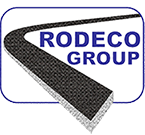GENERAL
The Nu-phalt Panel Van system is designed to offer a complete solution to mobile road repairs. The fully integration system houses all the equipment and signage needed to provide either proactive or reactive hot repair maintenance in a Highways Environment. The ‘Patented’ design allows the system to work independently from other support vehicles and can be designed and installed into nearly all manufacturers suitable vehicles. All internal surfaces are metal-clad to add durability and safety to the vehicle and include the provision on anti-slip aluminium plates to appropriate areas of high slip risk.
Hotboxes – Twin 200Kg thermostatically controlled integrated hotboxes c/w top loading facility and front discharge. These units have flame failure detection devices as standard and utilise hot surface ignition technology to ensure automatic operation and controlled heat output.
Crane – Overhead extendible lifting gantry installed c/w electrically operated 1,000 Kg Hoist. These units are independently inspected and certified at commissioning stage and are further inspected and recertified at industry standard intervals. Thermal protection overloads installed as standard to the hoist system.
Fuel – Integrated 120 litre LPG gas tank installed within the vehicle c/w fuel level sensor. External or Internal filling points available. The system also has the facility of installing auxiliary LPG bottles if ‘forecourt’ gas is not available. 15 Metre umbilical reinforced gas and electric extending reels are installed to ensure that maximum coverage is achieved by the range of heaters without the need to move the vehicle between repairs.
Controls – Printed Circuit Boards with PLC control systems utilising 12v DC (SELV) and LED status fault diagnostics. On board twin 140Ah Deep Cycle batteries complete with ‘Intelligent’ charging system from the host vehicle alternator enables no risk of van not starting. The system has battery condition monitoring and audible warning is the system batteries drop below a set threshold.
Safety – Integrated flame detection systems constantly monitor the system integrity and coupled with the provision of high/low flow pressure sensing on the LPG lines enable the PV system to be externally certified. Combustion gases generated by the hotbox are ‘flued’ out via a vertical stack and clean is is drawn into the combustion chamber via the provision of both powered and natural ventilation.
General – Integrated tool holders, compaction device mounting points, fire extinguishers, first aid kits, beacons and high power LED work lights all come as standard.
Benefits:
WORK STEPS
1. HEATING: The portable thermal heater is positioned over the defect area. An 8/10 minute pulsed heat cycle allows the fully controllable and efficient heater to penetrate the wearing course to relinquish its strength, creating a workable material without carbonising or damaging it in the process. |
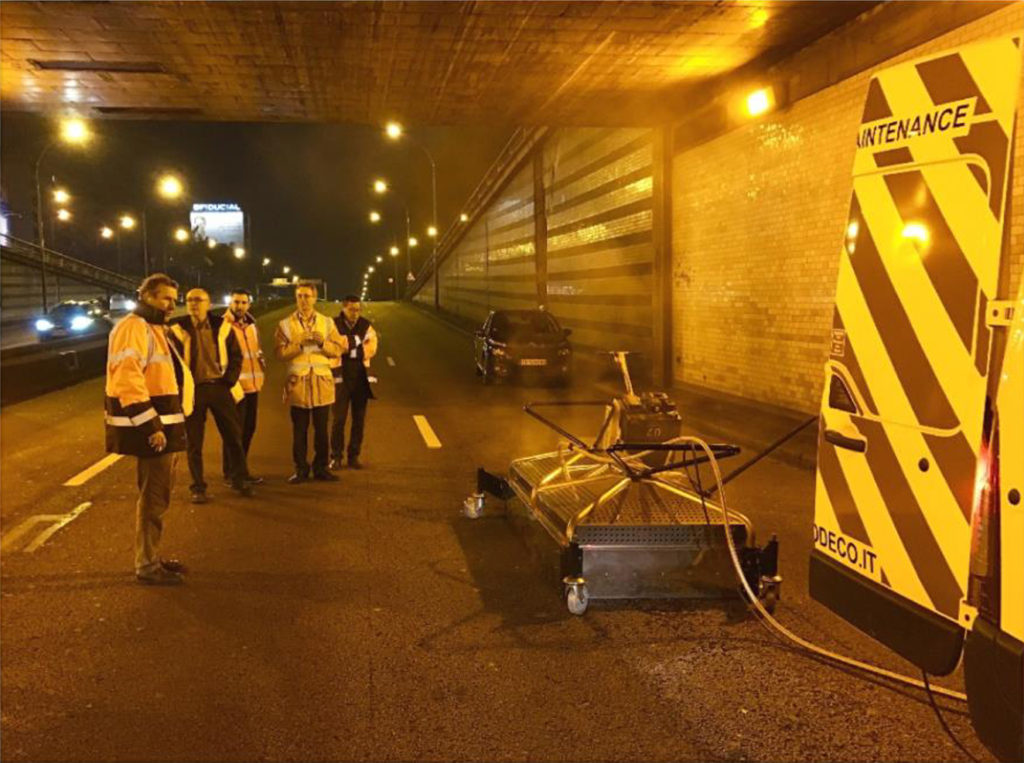 |
2. SCARIFICATION:To deliver a strong seamless joint, operators scarify an area 50mm in from the repair edge. This ensures integrity of the heated thermal joint between new and existing material. No material is taken from the repair, everything is recycled in-situ, resulting in no waste or landfill. |
 |
3. REJUVENATION: High grade enriched emulsion is added to the repair area. This is evenly mixed through the recycled material to deliver a consistent and even exposure. This recoats the recycled aggregate increasing bitumen content to near ‘new materials’ levels. |
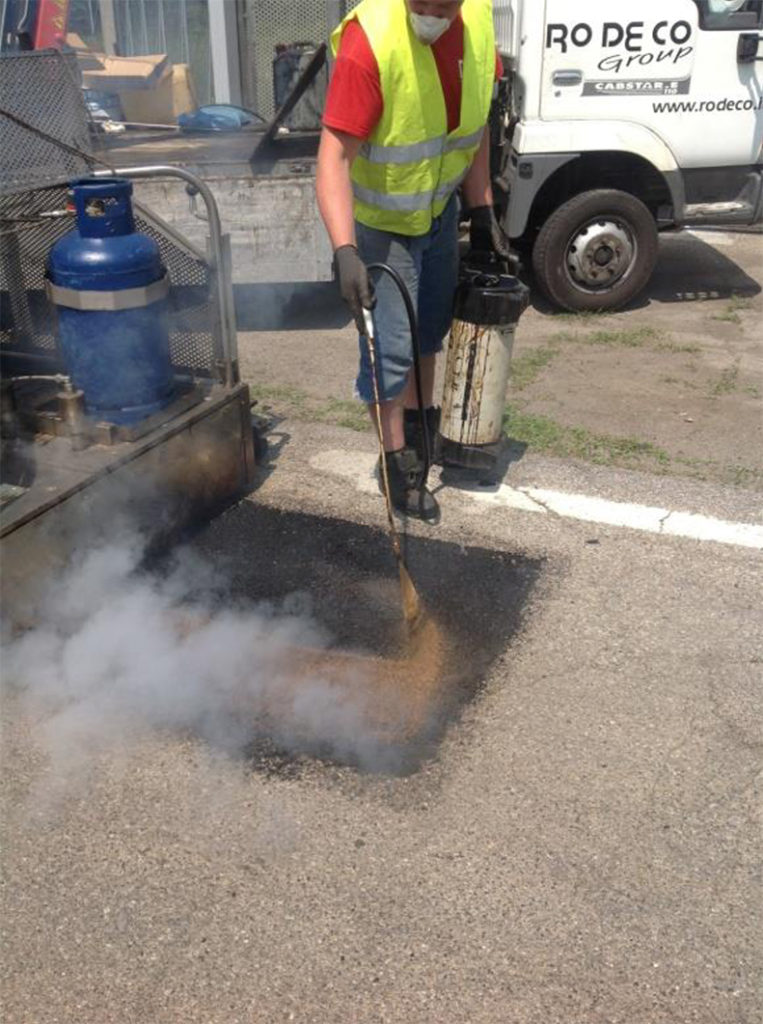 |
4. NEW MATERIAL: Cold Asphalt material is supplied in 25kg bags for ease of use and is fed to and from the on board hot box’s. New material is heated to 100°C before being transferred to the repair area. Sufficient levels of material are added to create a level repair following compaction. |
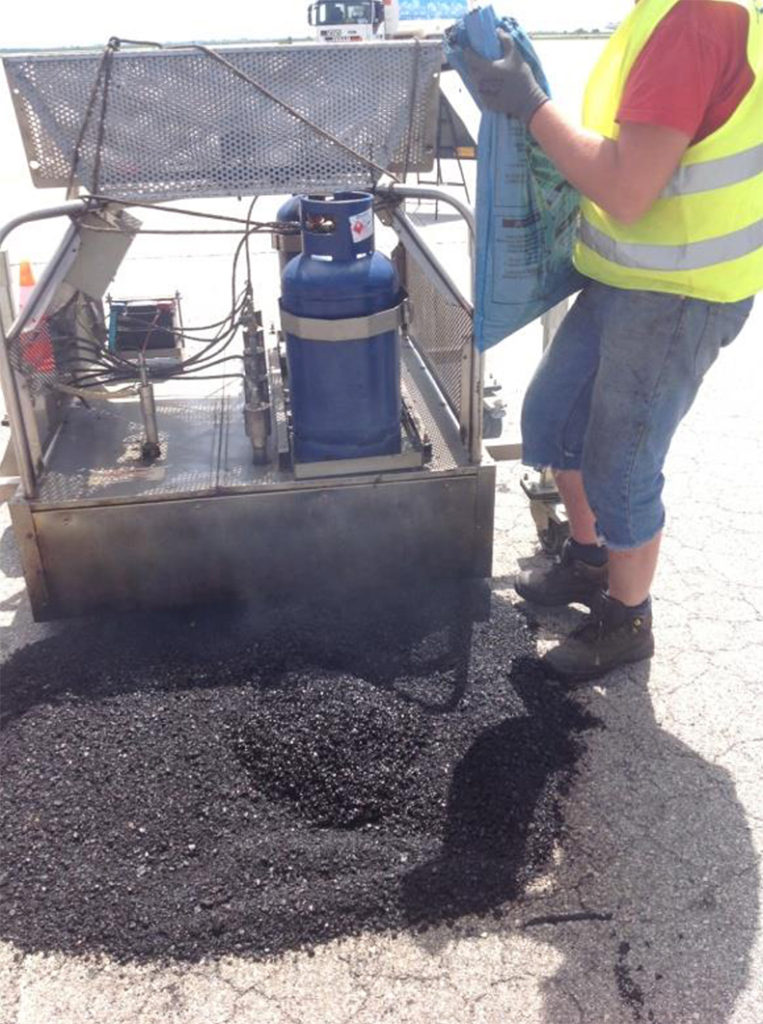 |
5. COMPACTION: Compaction equipment is specified in line with the repair area’s requirements. All edges are rolled first to create a mechanic interlock with the surrounding surface. A skilled operator assesses the repair area’s compaction requirements to complete a high quality and level repair. |
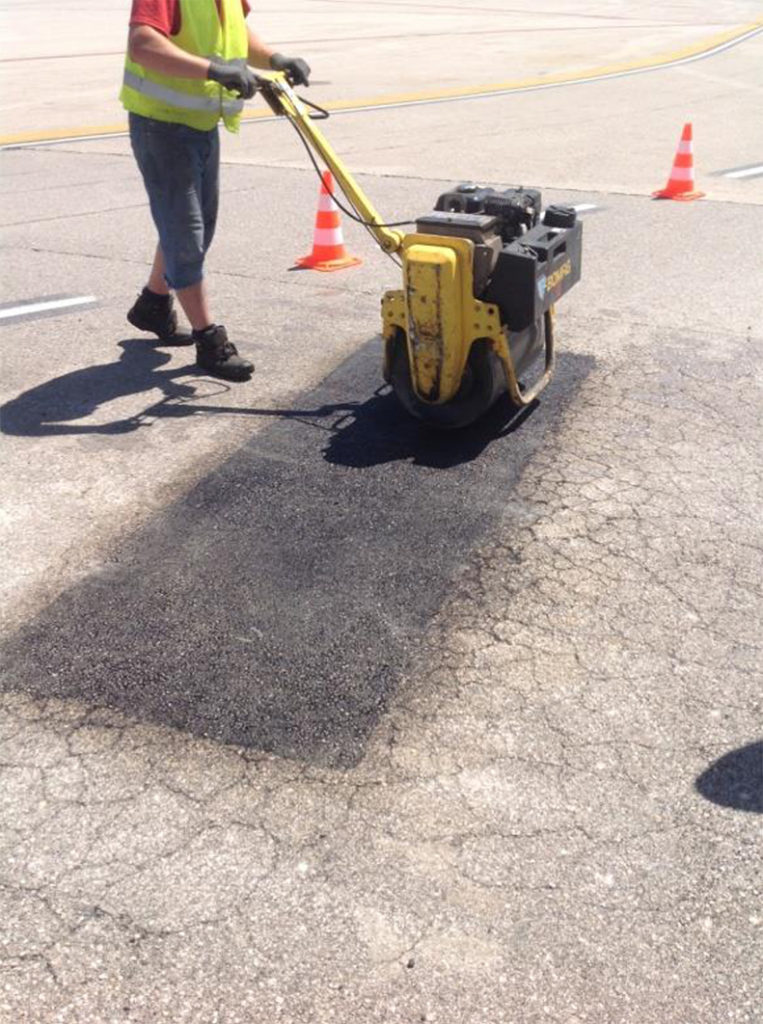 |
